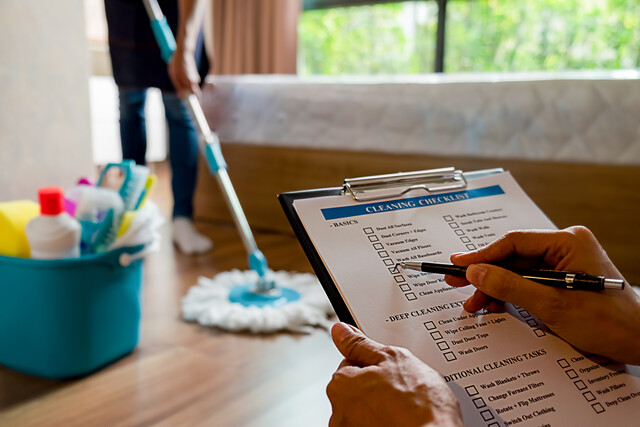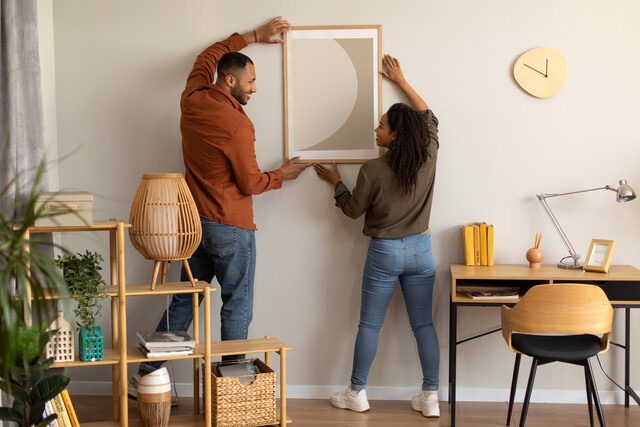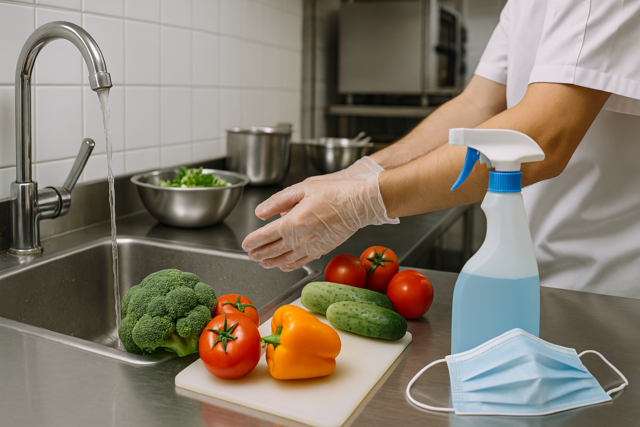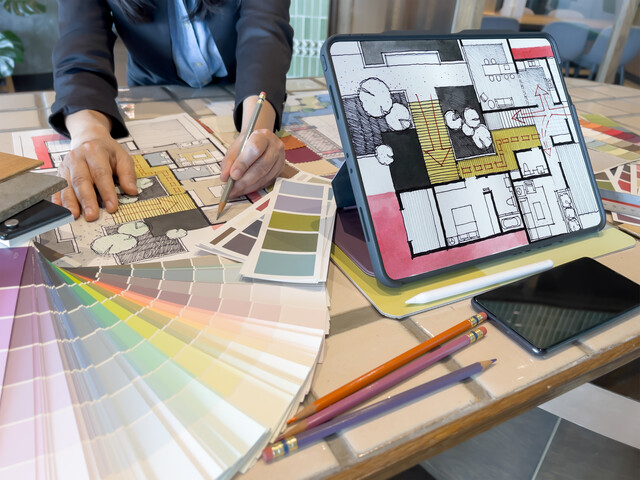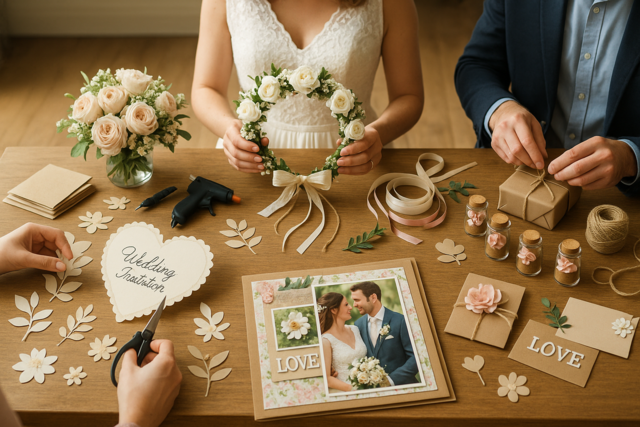Many people have invested a good deal of money in their furniture, so it is important to know how to properly care for it. The look of your furniture will set the tone for your home's overall appearance.
Wooden Furniture
Many years ago, most wooden furniture was handcrafted and individually assembled. Today, the majority of wooden furniture is sold in flat packs and it is often left to the consumer to assemble themselves. Many pieces are finished with synthetic plastic coatings, which sometimes eliminate the need to polish modern wooden furniture. Tables and cabinets are often made from panels of medium-density particleboard, coated with a thin layer of real wood to give it an authentic appearance.
This type of mass-produced wooden furniture is often very easy to keep clean. A quick wipe with a damp cloth using warm, soapy water is generally all that is required. Abrasive cleaners, even some gentle, cream cleansers can leave fine scratches on the surface of these types of wooden furniture. Later in this article, we will discuss the care of solid wood furniture.
Damage to Wooden Furniture
There are three types of damage to most wooden furniture: environmental, chemical, and physical damage. The best way to care for your furniture is to know these three risks and knowing what to do to correct damage as it occurs.
Environmental Damage
Wood is at risk for excessive dampness and dryness. Moisture can cause wood to swell and warp over time, while the lack of humidity (excessive dryness) can cause it to dry out and crack. The best protection is to keep furniture away from damp walls or from a heat source (for example, forced hot air or radiators). Direct sunlight can also bleach the color from wood and certain fabrics over time.
Applying wax to furniture will help to prevent environmental damage, but you will need to take further action to prevent permanent damage. You can increase humidity by placing a bowl of water next to a radiator or by using a humidifier. Similarly, dampness must be eliminated as well. Dampness can be caused by poor ventilation, leaking pipes, and poorly insulated windows. Keep precious furniture, especially wooden furniture away from sources of dampness, and keep them out of direct sunlight.
Chemical Damage
Many modern-day cleaning products contain harsh chemicals that can, over time, destroy furniture. Even products that claim to be mild or gentle will often contain chemicals that should not be used on wood. Also, there are other chemicals that often come into contact with your furniture, such as dyes from food spillages or some chemicals used in cosmetics. Food can also damage furniture. The citric acid in a lemon, for example, will bleach wood. Protecting the surface of your wooden furniture will help protect against these chemicals. Make sure there are coasters throughout the room so that you and your guests do not place drinks on the surface of wooden furniture. If water were to seep through drinks, it can swell and distort the wood.
Physical Damage
Physical damage to wood can occur through scratches, knocks, and burns. Dust can actually contain some abrasive fine particles, so when something is brushed up against furniture, dust can actually scratch your furniture. Keep your furniture's surfaces dust free.
Knocks and dents are sometimes possible to repair. If the dent is small, it can be repaired by sanding it with a very fine piece of sandpaper, but use caution when doing this and test a very small section first. Using a little bit of colored wax can fill in the fine scratches.
The most common cause of physical damage is heat – usually from placing hot objects on a piece of furniture. Always use pads or trivets to prevent this type of damage. Using a piece of fine sandpaper to a burn will often remove it, and then you can use some colored wax to smooth the surface.
Caring for Wooden Furniture
Many people make the mistake of over-using polish, which can lead to an excessive build-up of wax on the surface of your furniture. Wax is not harmful, but it is usually only necessary to apply polish once or twice a year. The important point is to always keep your furniture dust-free. Once your furniture is polished, you can re-buff it to a shine rather easily without having to polish the entire piece again.
Applying wax polish to wood will not remove dirt. In fact, it will do the opposite – it will trap dirt and dust on it. So, make sure your wood is dusted before applying wax. Wax will give your wood a nice appearance.
It is advisable not to change the type of wax or polish that you use. Keep using the same product on a piece of furniture to assure it will have a uniform appearance. Also, the ingredients in one polish might not react well to the ingredients in a different one.
Oiling Hardwoods
Some wood (mainly hardwoods) is oiled rather than waxed. Teak oil should be used for this purpose. It can be applied with a soft, fluff-free cloth or paintbrush, and then left to soak in. After a few minutes, redistribute the excess oil to the drier areas and then wipe away any residue. If you apply oil to hardwood, it will preserve the natural color of the wood because the oil will stop water from penetrating the surface. You will notice "beading" on the surface of an oil-treated wood when it gets wet. The water will not penetrate the surface. You will know it is time to reapply the oil when the beading no longer occurs.
Removing Marks and Stains from Wooden Furniture
Here are some tips on how to remove marks and stains from most wooden furniture.
-
Greasy fingerprints – Wipe with a barely damp cloth, dampened with a very mild, warm, soapy water solution.
-
Grease marks on untreated (un-oiled and un-waxed) wood – sprinkle the surface with some talcum powder. Place a paper bag over it, and place a warm iron on top of the paper. The paper will absorb the grease.
-
Watermarks – rub a cream, metal polish to smooth the surface, then rub a tiny amount of shoe polish or colored wax onto the surface.
Some upholstery has to be professionally cleaned, but some can be cleaned with little effort. If you decide to clean it yourself, remember not to use too much water. The foaming action in most upholstery-cleaning products is what actually cleans the fabric – not the water. Follow the instructions on the product and avoid leaving any residue.
To remove pet hairs from upholstery, gently rub a barely damp rolled up cloth over the surface, gathering all the hairs together. Then, using a rubber glove, brush your hand over the hair to collect it.
Cleaning Leather Upholstery
Wipe leather upholstery with a barely damp soft cloth to remove all dirt and dust. Do not use detergents on leather as they will harden the surface. To remove ingrained dirt, use saddle soap, which can be purchased at a hardware store. When you apply saddle soap, avoid over-wetting the surface because water may stain or lead to mildew.
Pets and Allergies
Our pets are dear companions for many people and we strive to make them as happy as possible in their environment. But, we must also be careful about how we care for our pets and especially how we clean up after them. Some pets carry bacteria that may be harmful to humans, especially very young and elderly people. All of these bacteria can be transferred to humans through direct contact with our pets, but also as a result of not properly cleaning areas that our pets live in.
General Tips to Avoid Contamination
The following are some general tips to help avoid coming into contact with contaminants from our pets:
-
Hands should always be washed after touching any pet, pet cages, pet feeding utensils, and of course, litter boxes and other items that might contain feces or other waste products.
-
Pets' immunizations should be kept up to date, especially rabies shots and other preventative measures that your veterinarian might recommend.
-
Never let pets eat from plates that will be used by humans, or walk on areas where food is prepared or eaten. If you are unsure if your pet has walked on a surface where you will be preparing food, be sure to wash the surface with a disinfectant before you prepare food.
-
Do not clean pet cages or a litter box in the kitchen sink. These items can transfer very harmful bacteria to humans.
-
Litter boxes and pet cages should never be kept in the kitchen.
-
Floor surfaces that are heavily used by pets should be washed regularly with a disinfectant or an antibacterial cleanser.
-
Pregnant women should never come into contact with a litter box, as some cats harbor germs that are particularly harmful to unborn babies.
-
If you suffer from allergies, whether they are pet-related allergies or otherwise, it is advisable not to allow your pets to come into contact with your bed. Your pet should have a bed of its own.
Pet Fur and Pet Dander
The cleaning routines may need to be altered if you have certain types of pets, especially dogs or cats. You will almost certainly need to vacuum more often due to your pets' fur or hair shedding. Consider getting a vacuum cleaner that is specifically designed for pet hair and other pet considerations. Carpets will need to be shampooed more often and hardwood floors will need to be washed more often.
In addition to pet fur, pet dander is constantly shed by your pets. Pet dander, which are dead skin flakes, can cause an allergic reaction in many people, especially for people with an allergy to dust. It is advisable to keep pets out of the bedroom of people who suffer from allergies.
Removing pet hair can be difficult in some situations, but a lint brush is usually very effective. A damp sponge can also be used. Keep both of these items very handy to encourage their use. If you have something hidden away or not easily accessed, they will tend to not be used.
To remove pet hair from fabric and upholstery, use a damp microfiber cloth. Drag the cloth toward you and repeat as often as needed. It will drag the hair up from the fabric. If dampness will harm a fabric, use a dry cloth or a rubber glove.
Litter Boxes
Cleaning the litter box is never an enjoyable process, but doing so regularly will help to ensure your pet's and your family's good health. Choose a cool area that is well ventilated for a litter box, and, if possible, avoid placing it in areas that humans come into contact often. Cats can carry salmonella, a type of bacteria that can, in some circumstances, cause death in some humans. Salmonella is transferred by coming into contact with a cat's urine, feces, or vomit.
Litter boxes should be emptied at least once per day. Dispose of dirty litter in a bag or any other disposable container that will be immediately removed from the house. Cat urine typically gets soaked by litter, so just because you cannot see any waste product does not necessarily mean the litter box does not need to be emptied.
Fleas
Contrary to popular belief, the most common flea is the cat flea. Dogs also carry fleas, but cats tend to carry them more often. Many people spend a great deal of money on special collars and other treatments to avoid fleas, but proper cleaning is the best preventative measure.
If you find fleas on any surface, clean this area at least once per day until you do not see a return of the infestation. Flea eggs can survive, however, after being vacuumed. If you are vacuuming fleas or their eggs, remove the bag and discard outside immediately. Some owners of cats actually become immune to flea bites over time. So, be especially careful to look for fleas even if you have not noticed any flea bites on you.
Keeping Your Pets Smelling Fresh
All pets have a certain amount of odor, but if your pet's odor is especially offensive, it might mean it is unwell. Skin disease, for example, leads to an unpleasant odor. A simple way to deodorize your cat or dog is to sprinkle baking soda in its coat and then brushing it off. Many cats and dogs like to be brushed, and it is a good idea to brush them regularly to reduce the amount of fur shedding. Launder pet bedding at least once every two weeks.
The smell of cat urine is one of the strongest odors found in any house, and it can be very difficult to remove. Distilled white vinegar mixed with water is usually the best approach in dealing with cat urine smells. Pour the mixture into a spray bottle and spray the affected areas (if the fabric can tolerate dampness). Let the mixture seep into the fabric or area for a few minutes, and pat dry with a dry cloth. Cats do not like the smell of vinegar and they will avoid these areas, so white vinegar is also useful if you are trying to keep your pet out of an area. Never use ammonia to clean up cat urine or smells. Cats sometimes confuse the smell of ammonia with their own smell, and they might be tempted to use any area that smells like ammonia as a place to urinate.
Dog Stains
To remove stains on carpet or any other surface cause by dogs' vomit or feces, it is best to react quickly before the stain seeps deeply into a fabric. Absorb as much as possible with a dry cloth first, then use a damp cloth, dampened with cold water and an acid-based solution such as white vinegar or ammonia. It is acceptable to use ammonia if you do not have cats, as dogs will not be affected by the smell of ammonia. For an older stain, dampen the cloth with some dishwashing liquid and rub forcibly into the stain. Chlorine bleach can also be used on white surfaces or any other areas that can tolerate bleach without being stained by the bleach.
Protecting Against Allergies
Some people think they have an allergy to housework! But, more often, they typically will have allergies to some cleaning products. Always wear gloves when working with some chemicals or even some natural products.
Wear an allergy-proof mask when dusting, vacuuming, or changing bed linens. If you are especially sensitive to a dust allergy, it is best to shower immediately after doing any cleaning that involves removing dust.
For people with dust allergies, it is recommended to purchase a High Efficiency Particulate Air filter, or HEPA filter. These filters are found in some vacuum cleaners and they are especially useful for cleaning walls, which also tend to accumulate dust.
For most people with allergies, dust will be the most harmful irritant. Pay close attention to areas that tend to be neglected – around the legs and corners of furniture and under the bed.
It you notice an allergic reaction to any cleaning product, discontinue its use. In addition to a big cost savings, making your own products will help to ensure the safety of your family by avoiding harmful chemicals.





